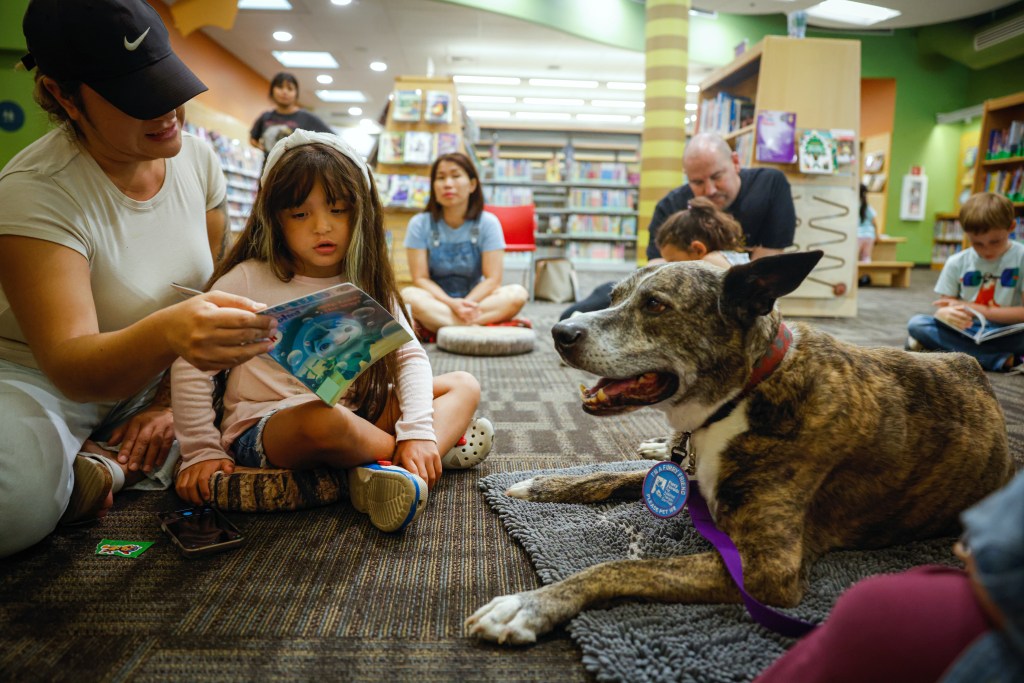For years California has faced a literacy crisis with less than half of third- and fourth-graders reading at grade level in the 2023-24 school year and the state often trailing national reading achievement.
Even before the coronavirus pandemic stalled learning, California students struggled to meet reading expectations. Recent state and national testing data shows they have been slow to regain ground lost during the pandemic. The gap between socioeconomically disadvantaged students and their more affluent peers is wider than ever, and the second largest in the nation.

Now, though, with Gov. Gavin Newsom pledging to include $200 million in funding for evidence-based literacy instruction in the state budget and California schools preparing for the first time this year to screen every student in kindergarten through second grade for reading challenges, educators and literacy advocates are hopeful the state will finally turn a page in the decades-long struggle.
But how did we get here? And why does California struggle more than most states with getting students up to reading standards?
The best way to teach kids how to read has been widely debated in the Golden State, and educators and literacy advocates have said some students are capable of masking their reading struggles because of the way schools have taught reading for decades — a technique referred to as “balanced” literacy.
Using a blend of whole language and phonics, balanced literacy focuses on teaching students to memorize sight words and use context and picture cues to understand a word’s meaning. Kim Tran, a K-5th-grade reading specialist and partner with the UC Berkeley California and Literature Reading Project, called it a “guessing game” where students look at the first letter and last letter of a word they don’t know and try to guess the rest.
“That’s just kind of muddling through it and hoping there’s enough pictures or context for you to understand what’s happening,” she said.
But decades of growing research — referred to as the science of reading — has revealed that balanced literacy isn’t the most effective way to teach students to read. Also known as structured literacy or evidence-based reading, the science of reading uses cognitive research, focusing on phonics, comprehension and fluency. Most states have adopted this approach, but California has not amid pushback from teachers unions and English-learner advocates.
“The whole point is that you don’t teach them to get proficient in reading by teaching them guessing and teaching them to pretend to read,” said Rachel Hurd, a San Ramon Valley Unified school board member. “You teach them to read and they practice reading and in the meantime you read to them a ton so that they’re interested.”
The National Council on Teacher Quality found that California is behind most other states in implementing the science of reading and ranks among the worst in the nation for the quality of its reading programs. But a new bill — AB 1454 — is moving through the state Legislature and would provide state-approved training and textbooks to all TK-5th-grade teachers on evidence-based reading.
Marshall Tuck, CEO of the educational advocacy nonprofit EdVoice — a key supporter of the bill — said one of the biggest reasons California has been slow to implement evidence-based reading curriculum is because of the state’s emphasis on local control, especially in schools, meaning it’s up to districts to decide curriculum and funding priorities.
“A lot of districts that maybe had been teaching kids to read a certain way for a long period of time without that very focused engagement from the state, it’s quite hard for them to change,” Tuck said.
New curriculum is expensive, school board member Hurd pointed out, and many Bay Area districts are already cash-strapped and short-staffed. The $200 million included in the budget for evidence-based reading instruction is one-time funding, so districts would need to pay for future training and instruction.

Unlike oral language, reading is not a natural ability we’re born with, explained Kristen Koeller, a San Jose-based reading specialist with more than 22 years of experience teaching California students. It’s a skill that needs to be taught at a young age, usually by the end of 3rd grade. After that, it’s much harder to rewire the brain, Koeller said.
After third grade, California switches from an emphasis on learning to read to “reading to learn,” said Chris Norwood, founder of the Bay Area Tutoring Association and president of the Milpitas Unified School Board.
“So if the skills aren’t developed, then all of a sudden you start to see an increase in the skill gaps of individuals because now they’re not able to read and comprehend and execute what the teacher may be asking,” Norwood said.
Many students who spent their early education in distance-based or virtual learning — referred to as the “COVID kindergarteners” — continue to face additional challenges.
Tran, the reading specialist, said it was hard to teach students to read on a computer screen where you couldn’t hear all of the kids, many were dealing with technology issues and students struggled to focus.
But educators said it wasn’t until those COVID kindergarteners hit fourth grade last year that the significant impact the pandemic had on their education was really clear — and shocking.
Michelle Robell, a first-grade teacher in Palo Alto, said even kids who appeared to be reading weren’t always understanding the material.
“They can be a super strong reader that can read super fast and super accurate, but they have no idea what they’re reading,” Robell said.
Technology has also had an impact. Robell said students are used to slouching in chairs and staring at tablets, so she has to spend more time teaching kids to sit up and look up from the ground before she teaches them to read.
Kids are used to instant gratification from their devices and have shorter attention spans, Koeller added.
And kids imitate their parents, Koeller pointed out. She sees parents drop off their kids at school while scrolling on their phones instead of engaging with their child.
“You learn to read in part through talking. … Any verbal skills that are lacking have to be made up for in school before you can really start to learn how to read,” Koeller said.
But even when parents promote a love for literacy, success isn’t guaranteed.
Karla Galvez-Lima, a parent of two young children in West Contra Costa County, said she exposed her 7-year-old daughter, Camilla, to reading at a young age, prioritizing story time and taking her to the library every week.
But Camilla began to pull away from her love for reading after first grade, and she was no longer reading at grade level.
Galvez-Lima said she doesn’t know why, but thinks there is a disconnect between what students learn in school and what they practice at home. She wishes there were “a bridge between the two” to support students.
Still, educators say while it might be harder to teach students how to read in a post-pandemic and technologically advancing world, and California has trailed many states in reading, they’re hopeful.
“I do feel like we’ve turned a corner in California,” Koeller said. “The question is, will state leaders and district leaders recognize that this crisis needs immediate attention? This isn’t something that we’re going to work on for the next five to eight years. We need to get busy, and we need to get busy now because it’s kids in the crosshairs. … It’s a crisis, but it’s a solvable crisis.”
This is the first story in an occasional series on reading.
<




